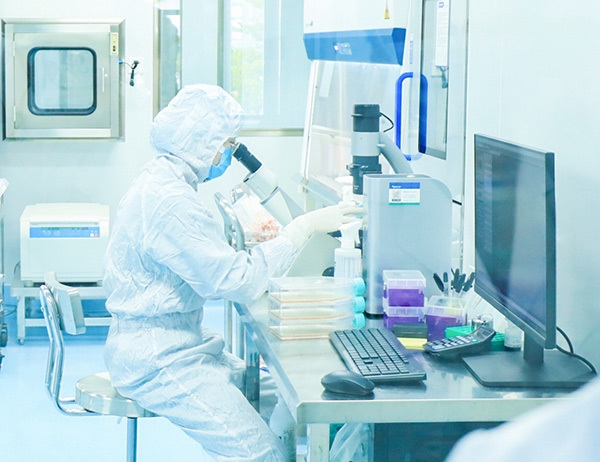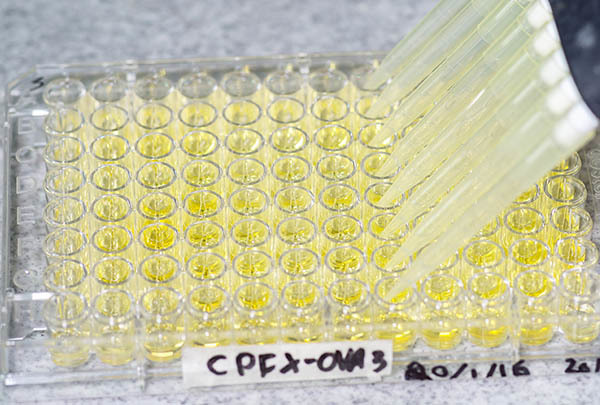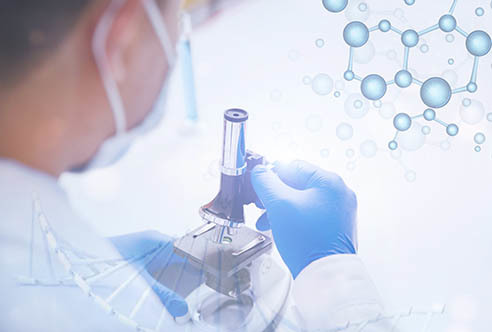
HUAREN MEDICAL TECHNOLOGY
R & D SERVICES
Basic Scientific Research
Basic Scientific Research

Cell Biology Lab

|
• Nanomedicine Research Cell proliferation is an important life feature of living organisms; cells proliferate by dividing. Unicellular organisms, produce new individuals by cell division. Multicellular organisms, which produce new cells by cell division, are used to replenish senescent or dead cells in the body.
Autophagy is associated with a variety of physiological responses, such as tumors, inflammation, immune response, and oxidative stress. Typically, the study of autophagy, in addition to the mechanism of occurrence, often combines autophagy with various life activities or diseases. For example, the role of autophagy in tumor development, inflammatory response, oxidative stress, and other different biological functions are investigated.
Tumor cells adhere to the laminin, fibronectin and type IV collagen of the stroma or basement membrane through specific receptors on the membrane surface. Tumor cells can then release protein hydrolases or activate zymogens already present in the stroma to degrade stromal components, and finally tumor cells move to fill the empty space of the hydrolyzed stroma, and the three processes keep repeating as the tumor cells continue to invade into the deeper layers.
Migration is one of the essential parts of tumor cell metastasis. Tumor cells require a certain degree of motility when they separate from the parent tumor, cross the vessel wall, and invade the surrounding normal tissues. Highly metastatic tumor cells usually possess strong motility. A variety of substances can stimulate the migration of tumor cells, such as tumor cell secretion factors, growth factors, extracellular matrix components (FN, LN), and metabolites or secretion products of some cancer metastasis target organs and other growth factors have chemotactic effects on tumor cells, which can lead to directional movement.
• Angiogenesis Angiogenesis is a key step in tumorigenesis. Regardless of primary or secondary tumors, once the growth diameter exceeds 1~2mm, there will be angiogenesis, which is due to the fact that the tumor cells themselves can secrete a variety of growth factors, inducing angiogenesis. Most malignant tumors have dense angiogenesis and rapid growth, therefore, angiogenesis plays an important role in tumor development and metastasis, and inhibition of this process will significantly prevent the development and spread of tumor tissue metastasis. In vitro angiogenesis experiments can well simulate the process of tumor angiogenesis and are suitable for studying the effects of drugs on this process. |

• Primary Cell Isolation And Culture
All cells derived from embryos, tissues, organs and peripheral blood and prepared by special isolation methods in primary culture are called primary cells. Cells obtained through primary isolation have biological characteristics similar to those of cells in vivo, and are ideal materials for the study of life activities related to living organisms.
• Cell Cycle Assays
The cell cycle is divided into two phases: interphase and division. The interphase is subdivided into three phases: the pre-DNA synthesis phase (G1 phase), the DNA synthesis phase (S phase) and the late DNA synthesis phase (G2 phase). Certain cells temporarily leave the cell cycle at the end of division and stop cell division to perform certain biological functions (G0 phase). Due to the different DNA content in each period of the cell cycle, normal cells usually have the DNA content of a diploid cell in the G1/G0 phase (2N), while the G2/M phase has the DNA content of a tetraploid cell (4N), and the S phase has a DNA content between diploid and tetraploid.


• Apoptosis Detection
Apoptosis is a kind of programmed death actively implemented by cells, which is one of the basic characteristics of cells, and it plays a very important role in embryonic development, tissue repair, and stability of the internal environment of the organism. In normal cells, phosphatidylserine (PS) is distributed only on the inner side of the lipid bilayer of the cell membrane, whereas in the early stage of apoptosis, phosphatidylserine (PS) in the cell membrane is flipped from the inner side to the outer side of the lipid membrane.
• Immunomagnetic Bead Cell Sorting
Magnetic cell sorting (MACS) with immunomagnetic beads is an efficient and simple method for the isolation and purification of immune and other cells. Magnetic beads coated with a primary antibody bind specifically to the corresponding molecule on the cell surface, or magnetic beads coated with a secondary antibody (goat anti-mouse or goat anti-rat) bind to a primary antibody that has been specifically conjugated to a molecule on the cell surface. The magnetic beads carry the bound cells to the column/tube for positive cell separation, achieving separation of positive cells or negative cell.

• Lentiviral Vector Construction
Lentiviral expression vectors, commonly referred to as shuttle vectors, contain the genetic information needed for packaging, transfection, and stable integration. The lentivirus packaging plasmid can provide all the capture proteins needed for transcription and packaging into recombinant pseudovirus vectors. In order to produce high titers of viral particles, it is necessary to use expression vectors and packaging plasmids to co-transfect cells at the same time, viral packaging is carried out in the cells, and the packaged pseudoviral particles are secreted into extracellular medium, and after centrifugation to obtain the supernatant, it can be used directly for infection of the host cells.
The viral system that can transfect a variety of cell types such as primary cells, stem cells, non-dividing cells, etc., and achieve reproducible and stable expression. For some difficult-to-transfect cells, the lentiviral system uses viral packaging of exogenous genes to enter the cell and stabilize the expression, which is an ideal tool for gene expression. Lentiviruses transport viruses into the cell nucleus through cis-acting elements, and recombinantly integrate the gene sequences to be expressed into the cell's genome, thus realizing continuous and stable high expression of the target sequences.
• Drug-Resistant Cell Line Construction
Drug resistance in tumor cells/cancer cells is an important reason why tumors/cancer are difficult to eradicate. In vitro-constructed drug-resistant cell lines can mimic the process of tumor cell/cancer cell resistance to specific drugs, which can help people to understand the mechanism of tumor cell/cancer cell acquiring drug resistance, screen for specific drugs acquiring anti-drug resistance, and provide targeted clinical treatments for related diseases.
• shRNA Vector Construction
First, design a set of shRNA primers according to the needs and complete the primer annealing. The vector will be subjected to double enzyme cleavage reaction, double enzyme cleavage after excision and recovery. The shRNA and the recovered vector will be reorganized into cyclic fragments by using the kit, and then transferred into the prepared bacterial sensory cells, and the grown monoclonal colonies will be sent to sequencing company for sequencing identification, and the correct clones will be the successfully constructed shRNA expression vectors. the selection of the target sites of the shRNA decides the effect of knocking down the expression of the target genes, and it usually involves 3-4 shRNAs. Usually, 3-4 shRNA targets are involved in the experiment, and the best target will be determined according to the results of the follow-up test, and then subsequent experiments will be arranged.



